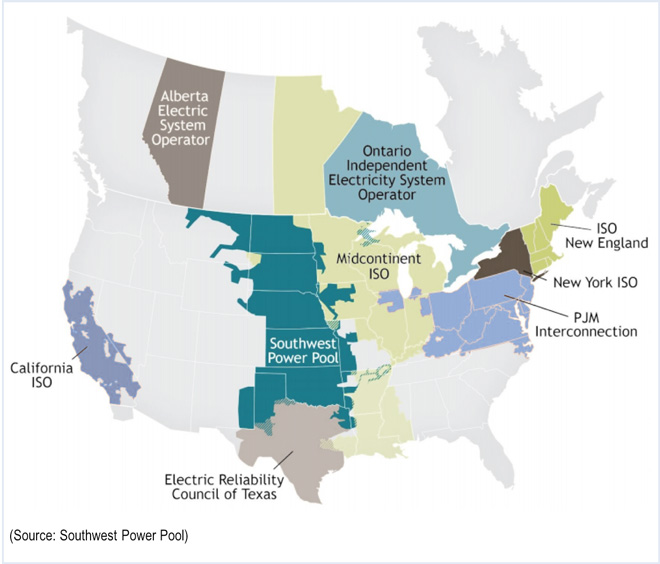By Ted Caddell
SPP has expanded its electric grid management from eight to 14 states, adding more than 5,000 MW of peak demand and 9,500 miles of transmission lines in the Great Plains.
The move, effective June 1, brings into SPP the Integrated System: the Western Area Power Administration’s Upper Great Plains Region (Western-UGP), based in Billings, Mont.; Basin Electric Power Cooperative in Bismarck, N.D. and the Heartland Consumers Power District in Madison, S.D.
Western-UGP becomes the first federal power agency to join an RTO under the Federal Energy Regulatory Commission’s Order 2000, which encouraged the voluntary formation of independent grid operators.
FERC approved SPP’s incorporation of the Integrated System in November (ER14-2850). While its grid is now under SPP’s control, the region won’t take part in SPP’s markets until October.
SPP COO Carl Monroe said Monday that the integration — which represents an increase of about 10 to 12% increase in peak load — has been seamless so far.
“The way we measure the success of the transition is if we hear no noise about it,” he said. He said it’s been quiet, and SPP is working on the next step of integrating the new organizations into the SPP tariff. He said Western-UGP, Basin Electric and Heartland Consumers are already participating in SPP’s transmission planning process.
Basin Electric has 2.8 million customers and 2,100 miles of transmission lines. Heartland serves 28 municipalities, including Sioux Falls, S.D. Western-UGP covers 378,000 square miles of prairie and farmland. The Integrated System evolved from a 1962 agreement between the Bureau of Reclamation, Basin Electric and 103 cooperative and municipal preference customers in the region. The SPP Board of Directors approved the system’s membership in June 2014.
It marks a significant increase in authority for SPP, which had shrunk after Entergy defected to MISO. The shifting of companies from one RTO to another spurred the need for settlement conferences overseen by FERC. Some issues are still in dispute, including MISO-directed transactions that flow across SPP territory.
The expansion will “enhance our ability to deliver value through transmission,” SPP CEO Nick Brown said. “The Integrated System’s footprint is well connected to SPP’s existing service territory and provides a logical expansion from a network configuration standpoint.”
SPP says the expansion will result in stakeholder net benefits of about $334 million. These include the increased ability to commit and dispatch generation into and out of Nebraska, and the availability of low-priced hydro generation out of Western-UGP.
Monroe thanked the Integrated System’s efforts in easing the transition. “Coordinating the flow of power requires hard work and collaborative planning,” he said. “We look forward to completing the Integrated System’s full membership in SPP this fall, which will provide increased options for buying and selling power.”


